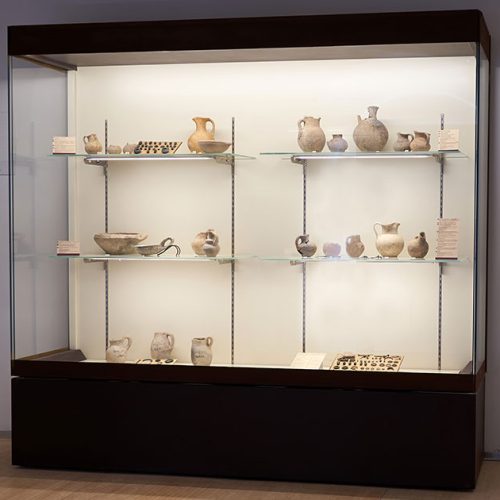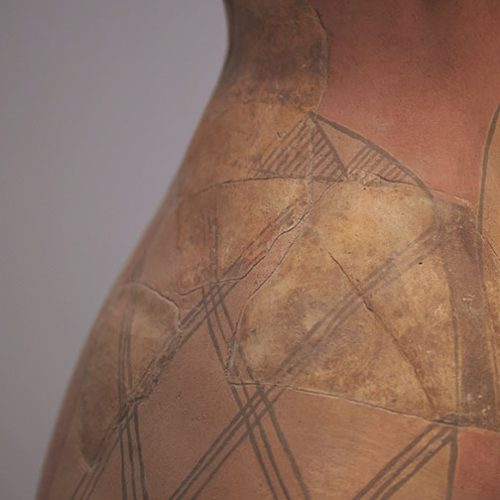Data about the prehistoric presence in the area of Noto come from the Upper Palaeolithic Stafenna Shelter, at Cava Candelaro.
Lithic tools found in Contrada Sarculla, in the Sortino Valley, date back to the Recent Mesolithic and Ancient Neolithic periods.
Inhabited in the Eneolithic and Early Bronze Age, the Sbriulia Cave is divided into three rooms, of approximately 40 metres. In 1968 Gioacchino Santocono Russo recovered some grey-brown impasto ceramics, decorated with a red-ochre pigment in the San Cono – Piano Notaro – Calafarina style (mid-4th millennium B.C.) and vases decorated in brown on a red background in the Castelluccio style (2200 – 1450 B.C.). In addition to flint, obsidian and basalt tools, there is also a rare shale plaque.
Flint microliths date back to the Mesolithic, while flint and obsidian tools, volcanic glass from the island of Lipari in the Aeolian Islands, date back to the Neolithic.


The name Castelluccio Culture derives from the village of the same name, investigated by Paolo Orsi in 1890/91
From the necropolis,around 200 artificial oven-shaped cave tombs were discovered, some of them with monumental façades, others have tomb slabs with spiral motifs in low relief, today on display in the “Paolo Orsi” Regional Archaeological Museum in Syracuse.
In the village some enigmatic objects, bone-bossed plaques (‘ossi a globuli’), perhaps idols or amulets, were produced.
The village of Castelluccio controlled a route along a ridge parallel to the River Tellaro, which stretched inland from the coast to the Monte Lauro, where flint was extracted. From the excavations, realised in the village by Giuseppe Voza in the 1980s and 1990s, some huts were found: at the centre of the largest hut, possibly a sacred place, there was a cordoned jar containing organic residues of olive oil.


An important Sicel settlement in the Early Iron Age was Monte Finocchito, the eponymous site of the Culture with the same name. In 1893 and in 1896 Paolo Orsi explored almost six hundred artificial cave tombs, dating back to both the Pantalica South Culture (850 – 730 B.C.9) and Finocchito Culture (730 – 660 B.C.).
In this last phase the village took the form of a proto-urban settlement and it was defended by a fortification with two bastions. Agriculture and sheep farming are accompanied by crafts and trade with the Greeks. Agriculture and sheep farming are accompanied by crafts and trade with the Greeks.
Relations with the Greeks changed after the founding of Akrai in 664 B.C.